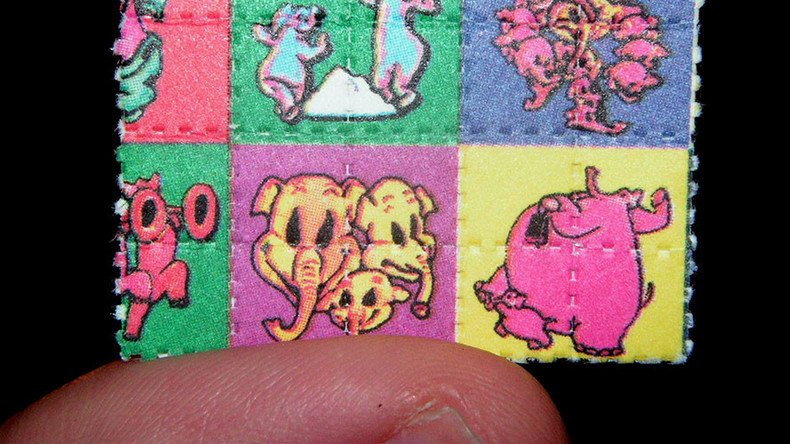Brain scans of LSD users reveal trippy visuals in groundbreaking study

The effects of LSD have been visualized for the first time with modern brain scans of users, a breakthrough 50 years in the making which one neuroscientist compares to the discovery of the Higgs boson.
This is your brain, on acid. First LSD imaging study offers insights into consciousness https://t.co/bHNTKVaLsIpic.twitter.com/kOgeq6JOXw
— New Scientist (@newscientist) April 11, 2016
In what could be the grooviest medical study ever, volunteers agreed to take Lysergic acid diethylamide (LSD) while researchers mapped changes in their brain activity ‘under the influence’, revealing some trippy results.
LSD users commonly experience an altered sense of reality, feelings of oneness with the universe, deep understanding, and hallucinations.
I'm watching a guy on LSD and he's explaining the universe in detail and I fucking love it.
— ᔕ ᕮ ᖇ ▼ ᕮ ᖇ (@CephalonServer) April 8, 2016
The 20 participants were injected with the acid rather than consuming it orally, which we are told, but wouldn’t know ourselves, is the more common method of use.
The study provides scientists with new theories about the visual hallucinations associated with LSD.
“This is to neuroscience what the Higgs boson was to particle physics,” David Nutt, a neuropsychopharmacology professor from and researcher on the study said.
Beyond its existential or recreational potential, scientists are most interested in going back to LSD’s roots when it was used therapeutically, before the US military and the Grateful Dead got a hold of it.
Shadowy folks, #LSD & #MKULTRA From article: CIA’s drug testing paved the way for the counterculture. Do you agree? https://t.co/YUtzouth67
— ERIE (@ERIEvision) April 11, 2016
From the Grateful Dead to Miley Cyrus, a new book explores how LSD changed culture forever https://t.co/8cbGbAB2gopic.twitter.com/K9kUKIajVE
— Rolling Stone (@RollingStone) April 12, 2016
Nutt told Nature that LSD was used to treat alcoholism in the ‘50s and ‘60s, before it was made illegal, and “retrospective analysis of some of the studies suggested it helped cut down on drinking.”
The scientists have plans to examine the effects of LSD on creativity and how it mirrors the dream state in future studies.
Are hallucinogens the new productivity tool for tech workers? - via @GetUncubedhttps://t.co/2EGw0e7tG2 Interesting article. #microdosing
— Tina Johnson (@tinaleejohnson) February 16, 2016
Watch: The Late Show with Stephen Colbert talks about #microdosing in the tech world https://t.co/7xdzlNPi7L@StephenAtHome@colbertlateshow
— Drug Policy Alliance (@DrugPolicyOrg) December 15, 2015
The study also explains the experience of “seeing with their eyes shut” after the imagination area of the brain lit up in addition to the visual cortex.
Scientists also reported “a more unified brain” with areas that control vision, movement, hearing, and attention working in a more connected way.
They believe this contributes to the feelings of “oneness” and “ego dissolution” which better connects users to people and the world around them.
A loss of connection was noted between the parahippocampus, which involves memory creation and the recollection of visual scenes, and the retrosplenial cortex, a mysterious area possibly linked to perception.
Aldous Huxley wasn't kidding about opening the Doors of Perception | https://t.co/aIwFxfiX5e
— Jake Kurczek (@EngagedBrain) April 12, 2016
Nutt said neuroscientists have waited 50 years to find out how the effects of LSD were created in the brain. Scientific research largely stopped after the drug was criminalized in the 1960s.
Timothy Tyler is serving a life sentence for 1 LSD sale at a Grateful Dead show @POTUS please grant him #clemency: https://t.co/5tVUsxEnnI
— Uller Law Office (@ullerlaw) April 6, 2016
This is interesting. I read something similar in a book about Jackie O... https://t.co/ZLQPGYPnHF
— John Zoccali (@JPFrankZoccali) April 6, 2016
Real talk...Nixon Aide Reveals That Racism, Not Reality Launched War on Drugs https://t.co/FEB7HIpOnZ
— LaDavia Drane (@LSD_Esq) March 23, 2016












